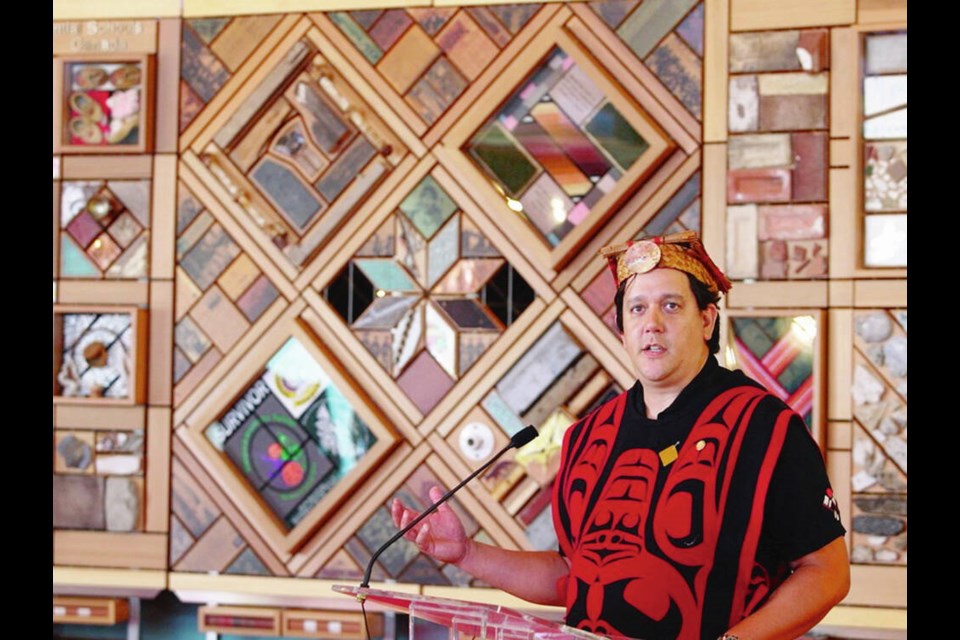Artist Carey Newman is asking Indigenous people to contribute sounds from their cultures for a virtual reality version of the Witness Blanket, a large-scale artwork that contains items reclaimed from residential schools.
People across Canada are invited to record sounds that will be woven into the experience, such as traditional instruments, languages, the noises of cultural activities like paddling, or sounds of the natural world, like rain or wind.
A team at Camosun College has been developing a virtual reality version of the artwork for the past couple of years, beginning with 3D scanning the Witness Blanket to create an interactive version that looks like the original.
Newman plans to complete the project with submitted sounds from Indigenous people that they associate with their culture to form background noise and sounds that can be triggered by the audience.
“It was sort of an effort to figure out how you can still make people feel something, the way that that original physical blanket does, but inside a VR experience,” said the Kwakwaka’wakw and Coast Salish artist.
Inspired by a woven blanket, the physical artwork contains hundreds of donated items from residential schools, churches and government buildings across Canada, such as moccasins, books, parts of a bed frame and school logos. The items are intended to tell the story of residential schools.
Newman said he worried the virtual reality version would lose some of the tangible connection to the blanket, and he hopes including contributed sounds will bring it to life.
The contributed sounds will help to forge a relationship between the work and its audience, said Kirk McNally, associate professor of music technology at the University of Victoria, who is working on the project.
Newman plans to contribute a recording of knives carving wood. “It was something that was taught to me by my father. To me, that’s something that I closely associated with culture,” he said.
The artist envisions different versions of the experience, including a museum version with a narrative arc, an art gallery installation that can be projected onto a wall and a classroom-friendly version.
The virtual experience will help make the Witness Blanket more accessible, especially to remote communities that contributed items but have not been able to host the artwork.
The Witness Blanket has travelled across the country and is currently in the Canadian Museum for Human Rights in Winnipeg.
The virtual reality Witness Blanket is expected to be ready in about a year.
Camosun College, the Canadian Museum for Human Rights and the University of Victoria have all partnered on development of the virtual reality version.
Sounds can be contributed online at https://bit.ly/WitnessBlanketVR.
>>> To comment on this article, write a letter to the editor: [email protected]



